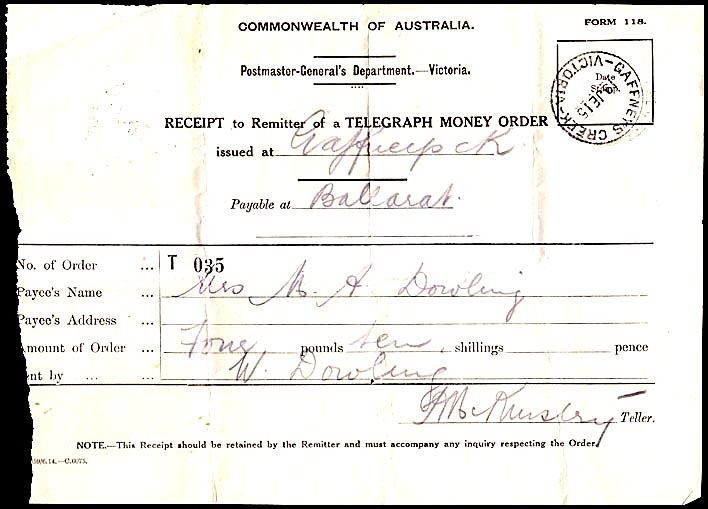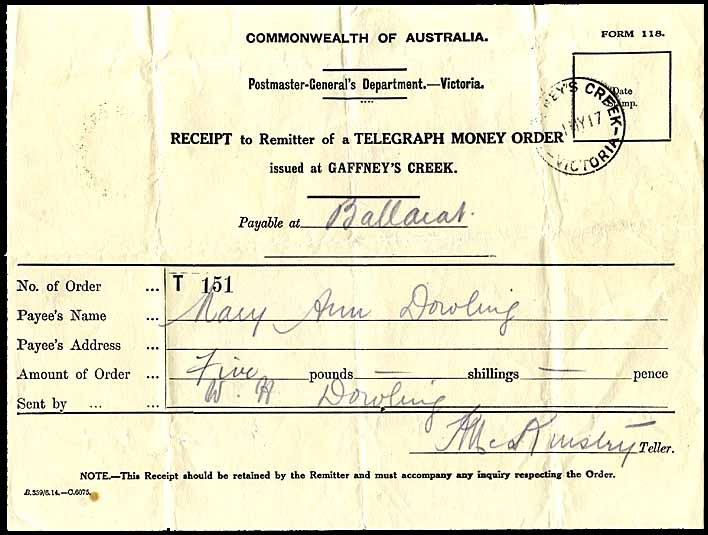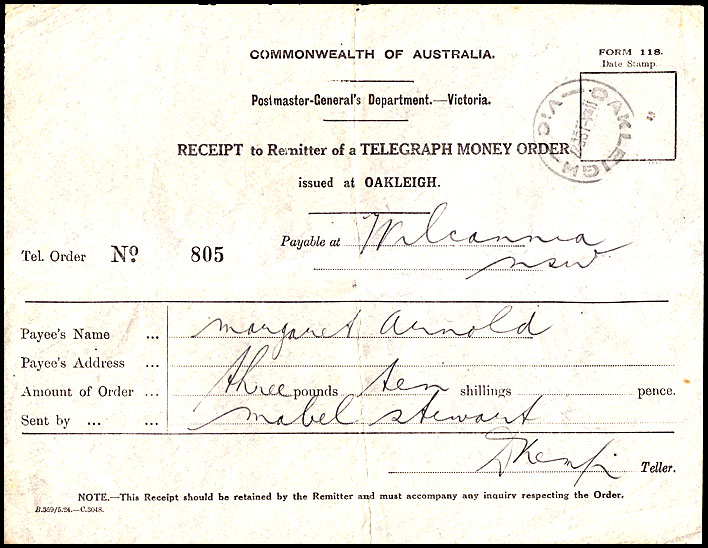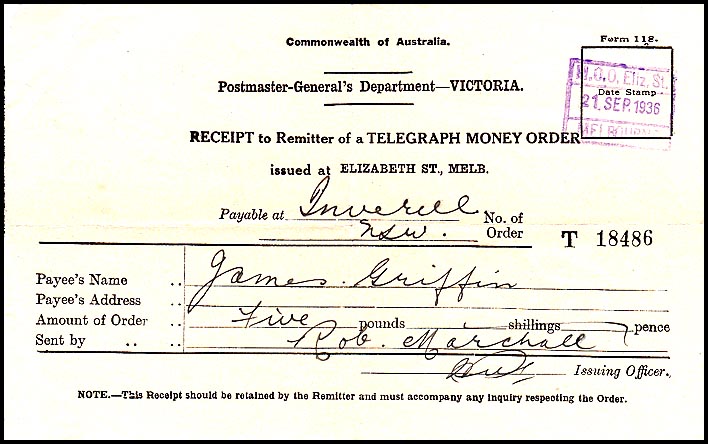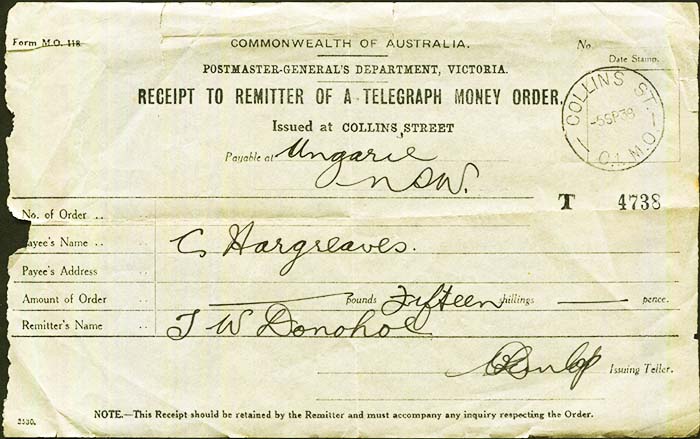Telegraphic Money Orders.
- Australia 1901-1988
- New South Wales
- Queensland
- South Australia
- Tasmania
- Victoria
- Western Australia
- International
- Special aspects
On 1 July 1885, the charge for telegraphing a money order, which had previously been 1s. in addition to the commission on the order, was reduced to 6d.
There are few reports about the telegraphic money order system being defrauded. One of the rare reports was published in the Horsham Times on 9 August 1892:
A CLEVER FRAUD.
There appears to be no end to the methods of swindling or limit to the ingeniousness of swindlers. A case in point occurred recently in Traralgon, Gippsland.
A young man of good address dropped in one afternoon to the local post office and introduced himself to the postmistress, Mrs. Dunn, as an employee of the Telegraph Department in Melbourne spending his holidays in the neighborhood. The postmistress was pleased to have the opportunity of conversing with one who understood the technical terms of the business and one who was well versed in matters departmental and she was not averse to spending some time in conversation.
Either with her express permission or by strategy, the stranger gained access to the telegraph instrument and dexterously ticked off some messages to the head office, Melbourne, amongst them being two telegraph money orders for £20 each.
He left Traralgon very shortly afterwards for Melbourne. The messages were received in the ordinary way and were duly honored when the payee appeared to claim his money. The fraud was quickly discovered but the telegraphist and his confederate were not so easily found and though measures have been taken by the police for their apprehension, they have up to the present not been arrested.
The postmistress, who is the widow of the late Judge Dunn, will be required to make good the amount out of which the department has been defrauded. Up to the present, no clue has been obtained but it is believed by Detective Lomax that both the offenders are ex-telegraph operators and that they have made their escape to one of the other colonies.
On 11 October 1892, the Traralgon Record repeated an additional report on the incident from the Age as follows:
"The postmistress at Traralgon (Mrs. Dunne), who was recently visited by a person who made use of the telegraph wires to perpetrate a money order swindle explains that she was never called upon either to resign her position in the service or to pay the £40 which the swindler and his accomplice in Melbourne obtained from the postal department by means of an unauthenticated telegraphic money order. Mrs. Dunne also makes the statement, hitherto unpublished, that the swindler had been formerly employed in the Traralgon office and that his plea of calling to see his former associates was therefore the more readily accepted as an excuse for his visit. He also said he was on his way to Bairnsdale on sick leave.
His complete knowledge of the office and of the existence of a practice, permitted when operators are personally known to each other, of "speaking" on the wires, enabled him to execute the fraud without exciting any suspicion.
Mrs. Dunne thinks the publication of the narrative of the fraud is calculated to injure her and claims that there are many other offices where a similar fraud might easily have been committed by such an expert swindler".
The issue of the fraud was taken up at the 1892 Inter-colonial Postal Conference in Melbourne. It was noted that:
"The permanent heads of departments taking part in the conference who had been asked, in view of a recent occurrence in Victoria, to consider as to the establishment of a system to provide against frauds in connection with telegraph money orders, reported that they were unable to suggest any system which would afford absolute security against fraud. They did recommend, however, regulations to the effect that money order telegrams should be numbered consecutively, the number to appear as a prefix in the body of the message, that the order should be transmitted through the chief office which, after verifying the number, should advise the paying postmaster, that the postmaster or officer in charge should be held personally responsible for every money telegram transmitted from his office and that a postmaster should on no account allow any operator or officer of the department unattached to his office or even his own officers, when not on duty, to have access to the instruments".
The report was adopted. Soon after an additional requirement was imposed - that an outgoing telegraphic Money Order should be countersigned by two authorised officers.
Examples of Money Order Receipt forms for Victoria.
The following table shows the main variations of the format for the Victorian Money Order receipts:
- all forms have a serrated edge at the left where the form had been torn from the stock book;
- the main differences among the formats are:
MO-1: order number is printed in large type as the top line in the 5 line information box;
MO-2: order number is printed in large type above the 4 line information box;
MO-3: order number is printed in large type above and to the right of the 4 line information box.
MO-4: order number is printed in large type as the top line and to the far right of the information box.
